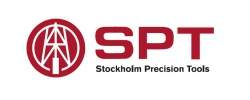High above the deep valleys and canyons in Colorado’s Piceance Basin, Frank Westcott, the president of Colorado-based Native Navigation, faces a challenge. He’s listening to his directional driller’s plan to navigate a new borehole through 16 other wells already spudded from the drill pad they’re standing on.
“The risk in this play is not drilling a dry hole. Suddenly, drilling a hole has become even more technical,” says Westcott.
Directional drilling multiple holes from a single drill pad is standard practice in the prolific oil and gas fields of the Piceance Basin, but the risks are enormous the holes are in close proximity and a well collision a possibility.
Directional drilling is a high stakes specialty – a successful hole in the Piceance Basin can average 1.2 to 1.4 billion cubic feet of natural gas, while a mistake in accuracy could cost millions of dollars and irreparably damage the company’s reputation.
Downhole gyroscopic survey navigation systems
New downhole gyroscopic survey navigation systems are making the job a lot easier for directional drillers, and the company on the forefront of survey technology is Stockholm Precision Tools (SPT). SPT has been in the business of developing survey technology since 1990, but earlier this year introduced the north-seeking GyroTracer™ a survey tool many in the industry have hailed as the most reliable and accurate available globally.
“When you have as many as 22 wells spudded from a single drill pad, you need a reliable tool for accuracy and one not affected by magnetic interference. As soon as we started using the north-seeking GyroTracer, we noticed the difference,” says Westcott. “The GyroTracer has worked perfectly, 100% of the time.”
Westcott is not alone in his assessment of the north-seeking GyroTracer. “The technology is heads above the rest,” agrees Justin Semadeni, technical services manager for Major Drilling America.
Major drilling technicians surveyed an NQ core hole with the SPT gyro in memory mode to a measured depth of 1,300m – inclination was 7.38° and azimuth was 212.06. Following the initial survey, the hole was deepened and, two and a half months later, the company was called out to survey the hole again.
“We lowered the gyro to the tie-on point (the final station of the previous survey) and began surveying from 1,300m. When we retrieved the data from the gyro, the tie-on inclination was 7.38º and the azimuth was 212.16. We couldn’t believe the incredible repeatability!” says Semadeni.
North-seeking gyro
The north-seeking GyroTracer uses the latest gyroscopic and quartz technologies, along with many advanced sensors, to find direction. It’s a North-seeking gyro; all azimuth measurements are in reference to geographic north, which means it produces more accurate and precise results because magnetic north shifts its geographic position over time, whereas the geographic north remains static.
No magnetic interference
Unlike other downhole survey or magnetic tools, the GyroTracer it is not affected by magnetic interference and can be run inside casing, drill pipe and magnetically-disturbed ground. As a consequence, SPT believes the directional survey data it generates is more reliable and accurate than data generated by competing gyros based on micro-electro-mechanical systems (MEMS).
“When you are conducting exploration work, the technology you deploy in drill hole surveying systems, particularly in demanding environments where wells and holes must be drilled to greater depths with more complex trajectories, you need technology that is highly reliable and accurate,” says Orlando Ramirez, SPT’s managing director.
“Unreliable directional survey data can miss targets at great cost, and may also cause environmental damage in sensitive areas such as offshore oil and gas fields.”
Reliability
The north-seeking GyroTracer instrument is rugged, user-friendly, and does not require field calibration or a roll test before operation. It’s low-power, lightweight and capable of operating on a wireline or battery-operated memory mode. It’s also less expensive than many of the other survey tools and services available.
International Directional Services, a directional drilling and borehole-survey service company, has tested many survey instruments, both magnetic and non-magnetic, over the years. General manager Greg Taylor says the company’s experience with the repeatability and accuracy of SPT’s new system to date has been “excellent.”
Similarly, positive feedback has come from mining companies in Ontario’s Sudbury Nickel Basin, from Goldcorp’s Red Lake gold camp, from petroleum companies in Tunisia, from the offshore gas fields of eastern Italy, and from other international drilling companies servicing the resource sector.
Customer and operator training
“At SPT, we are committed to the success of our customers,” Ramirez continues. “We invest 25% of all we make back into research and development, focusing both on new product advancement and on implementing upgrades and improvements to existing tools and software. Our focus is 100% on delivering technology to enable our customers to meet their specific project goals and objectives.”
But tools are never enough, and SPT does not believe its products alone differentiate the company from its competition. What makes SPT successful is its tools in combination with comprehensive and relevant customer and operator training to ensure maximum efficiency in operation.
SPT training and technical teams are on the road throughout the year, delivering theoretical and practical training, along with post-sales technical support, to SPT customers for the life of the equipment they purchase.
In an economy where every penny counts, and return on investment is a critical element of any business decision, knowing you’ve got the best tool, and the best service and support team on your side, can make all the difference.

